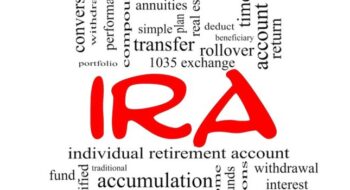Let’s be real—saving for retirement can feel like a chore. It’s like eating your vegetables or flossing: you know it’s good for you, but it’s easy to push off. Here’s the good news: Uncle Sam is offering you a tax credit for doing something that’s already in your best interest. Enter the Retirement Savings Contributions Credit – also known as the Saver’s Credit – the ultimate win-win for building your nest egg while reducing your tax bill.
Think of it as a little bonus for being financially responsible—kind of like getting paid to eat your broccoli. This tax credit can give you up to $1,000 back ($2,000 for couples) just for contributing to your retirement account. That’s free money to reward you for investing in future-you.
What is the Retirement Saver’s Credit?

The Saver’s Credit is like a high-five from the IRS for saving for retirement. It offsets a portion of the first $2,000 (or $4,000 for married couples filing jointly) that you contribute to eligible retirement accounts.
Eligible Accounts Include:
- Traditional and Roth IRAs
- 401(k), 403(b), 457(b), and Thrift Savings Plans (TSPs)
- Contributions to Achieving a Better Life Experience (ABLE) accounts for individuals with disabilities
Key Perks
- Tax Credit Up to $1,000 for Individuals or $2,000 for Couples Filing Jointly – This credit can directly reduce your tax bill or increase your refund.
- Stackable Tax Benefits – The credit works alongside other tax-advantaged savings opportunities, giving you double the incentive to save for retirement.
Important Details to Remember
- Rollover Contributions Don’t Qualify – Only new contributions are eligible for the credit.
- Withdrawals Can Reduce Your Eligible Amount – If you take money out of your account, it may lower the contributions that count toward the credit.
By taking advantage of the credit for qualified retirement savings contributions, you’re not just preparing for retirement—you’re also enjoying financial perks today.
Who Qualifies for the Saver’s Credit?

The Saver’s Credit is a valuable tool to help taxpayers save for retirement and lower their tax bill—but not everyone qualifies. Here’s a breakdown to help you determine if you’re eligible and how to make the most of this credit.
To qualify you must:
- Be at least 18 years old
- Not be claimed as a dependent on someone else’s tax return
- Not be a full-time student
Saver’s Credit Income Limits for 2025:
- Married filing jointly: Up to $76,500
- Head of household: Up to $57,375
- Single or married filing separately: Up to $38,250
Not sure if you’re eligible? The IRS Interactive Tax Assistant tool can help you figure it out.
Actionable Steps to Qualify:
- Maximize Your Contributions: Contribute as much as possible to eligible accounts like traditional IRAs, Roth IRAs, 401(k)s, or other employer-sponsored plans. Even modest contributions can help you qualify for the credit.
- Keep an Eye on Income: If you’re close to the AGI limit, consider contributing to a traditional IRA or pre-tax 401(k) to reduce your taxable income and stay eligible for the credit.
- File the Right Paperwork: To claim the Saver’s Credit, you’ll need to file Form 8880, Credit for Qualified Retirement Savings Contributions, along with your tax return. This form helps the IRS calculate the exact amount of credit you qualify for.
- Include Spousal Contributions: Married couples filing jointly can both contribute to their retirement accounts, increasing the potential credit amount to as much as $2,000.
By knowing where you stand and taking action now, you can turn this credit into a valuable part of your overall retirement strategy.
Why the Saver’s Credit Is a Big Deal

This isn’t just some boring tax form—you’re getting real, tangible benefits here. Let’s talk about why you don’t want to miss out on this credit:
- Tax Incentives – Think of the Saver’s Credit as a “thank you” from the IRS for doing the responsible thing. Save for your future and reduce your tax bill today. Win-win!
- Turbocharges Your Retirement Savings – If you’ve been procrastinating on saving for retirement, this is your sign to start. With the added incentive of a tax credit, contributing to your retirement account becomes even more rewarding.
- It’s Inclusive – The Saver’s Credit isn’t just for retirement plans. It also applies to ABLE accounts, helping individuals with disabilities save for future expenses while enjoying the same tax perks.
Special Note on ABLE Accounts
ABLE accounts are a fantastic option for individuals with disabilities. These accounts allow families to save for disability-related expenses without jeopardizing eligibility for benefits. Contributions to ABLE accounts are eligible for the Saver’s Credit, making them a dual-benefit savings tool.
For more details, check out IRS Publication 907 on the IRS website.
Your Action Plan

Here’s how you can take advantage of this credit and secure your future:
- Start Contributing Now – Even small contributions add up. If you’re not maxing out your retirement savings, consider increasing your contributions today.
- Track Deadlines – Make sure your workplace contributions are in by year-end and your IRA contributions by the tax filing deadline.
- File Smart – Don’t forget to claim the credit on your tax return using Form 8880.
- Get Expert Advice – Navigating retirement planning and tax credits can feel overwhelming. Consulting a financial advisor can help you maximize your savings strategy.
Conclusion
Saving for retirement doesn’t have to be all serious spreadsheets and calculators. With the Saver’s Credit, you can save for your future and give your tax bill a much-needed trim.
Why leave free money on the table when it could be growing in your retirement account? Start contributing now, claim the Saver’s Credit, and get rewarded for taking steps toward financial freedom.
For more tips, tools, and strategies to help you retire in style, visit the IRS Saver’s Credit page or reach out to a financial expert. Let’s build that dream retirement—one tax credit at a time!




